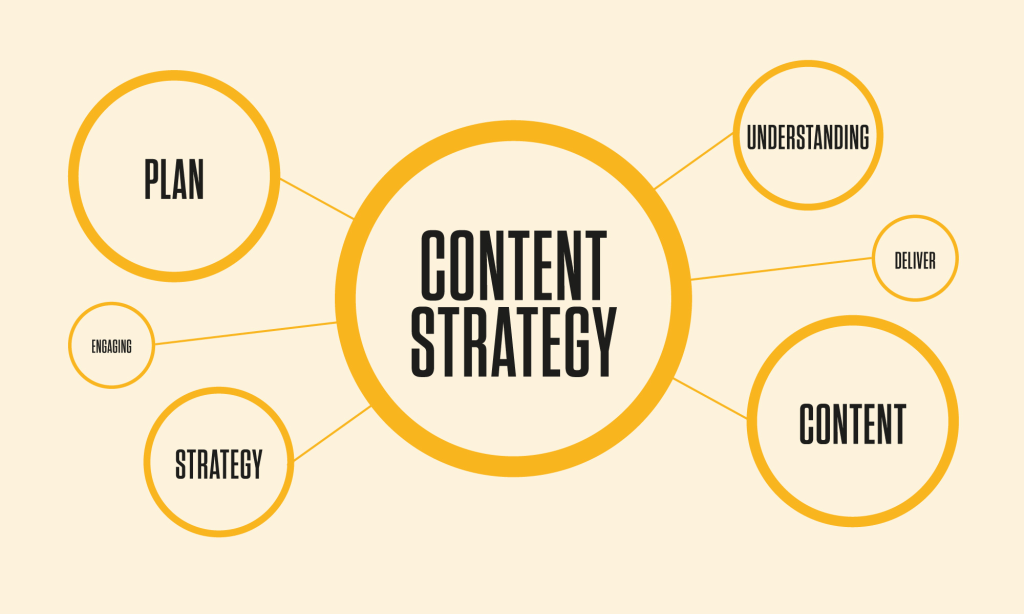Inbound Marketing: The Definitive Content Strategy for Success
One of the greatest value-based marketing strategies, inbound marketing, has been around for a while now, but if you haven’t heard of it, you could be missing out on a lot of potential customers and money.
Quick Links
The goal of inbound marketing is to draw customers in by providing them with useful content and interacting with them on a personal level.
Inbound marketing, on the other hand, builds relationships with your audience by addressing problems that they currently have, as opposed to the one-way flow of information that comes from outside your company.
What’s the secret to this?
With a well-thought-out content plan.
The success of any inbound marketing campaign hinges on the creation of an effective content strategy. If you don’t have a content strategy in place, you’re left with cookie-cutter marketing messages that have been proven to be unsuccessful time and time again.
We’ll show you how to create a winning content strategy for your inbound marketing efforts.

What Is a Content Strategy, Anyway?
A company’s aims and objectives can be achieved through the use of a content strategy.
The core of your marketing message is your content. It can be anything from blog entries to articles to infographics to videos to customer testimonials to white papers. Your brand’s voice and the interests of your target audience can be identified through a content strategy.
Even if your company’s business goals may differ from those of your competitors, the goal of your content will likely be to generate interest in your products or services and generate new business.
What Exactly Is “Content”?
Think of content in the same way that you would think of digital marketing, which typically has four key elements:
- What’s the meat of what you’re trying to get across?
- In order to reach your intended audience, what message are you trying to convey? You can provide information that is truthful, useful, amusing, or any mix of the three.
- What are you and the reader expected to get out of this?
- When it comes to this content, who exactly are we writing for? In other words, why would someone want to read it?
It’s important to consider the medium in which you’re distributing your material. Your blog, website, social networks, and email are just a few examples of channels.
The way in which information is presented is called its “form.” In what format(s) will the content be presented to the user? What will the user do with the information?
When creating content and developing a content strategy, each of these core elements should be taken into account.
But what’s the point of it all?

What’s the Purpose of a Content Plan?
A content strategy isn’t something you’re working on haphazardly. When it comes to inbound marketing and the success of your company, you need content marketing. Here are some of the main reasons why you should have a content plan in place:
Establish and Demonstrate Expertise
The ability to establish your brand as the leading authority in your field can be achieved through the creation of high-quality content. If a company can demonstrate that it is an industry thought leader, customers are more likely to respond favorably. As a part of your content strategy, use it to display your unique skills and knowledge.
Create a Culture of Confidence
Experts are more trusted than amateurs when it comes to solving a specific problem. By addressing and describing how to overcome these issues, your content strategy will determine the best approaches to develop consumer trust in your business.
Improve Your Search Engine Rankings And Organic Results.
Your content will rise to the top of Google’s search results if it’s more beneficial to users than the competition’s stuff. If you want to improve your SEO, you should begin with creating high-quality content.
Increase the Number of Potential Clients
It’s clear that this is the most important one. If your content strategy is well-executed, you will be able to attract new clients from those who have never heard of you.
Attract Your Ideal Clients
The quality of fresh leads is just as crucial as their quantity. More customers in your target market who are looking for your product or service will be attracted to your site if it has better content.
Targeted Content Helps You Grow Your List
There is more to content than meets the eye. Content should be created for each stage of the buyer’s journey: awareness and consideration, followed by consideration and final decision. To move people down the funnel, speak directly to them at each stage.
Produce Content That Can Be Share
In order to create content that not only benefits your audience, but also their social networks, you’ll need a content strategy. One of the finest strategies to get new leads is to turn your customers into brand ambassadors.
Increasing The Number Of Loyal Customers
Visitors will return to your website more often if it has recurring content, which encourages them to join a user community. For your brand, nurturing new advocates through this community might be a huge value.
Establish Your Company’s Credibility
Using your content, your audience may see how well you do in comparison to the competition. All your target audience needs to know is that you will provide them with the finest solution to their problem, and they already know that.
Build Backlinks to Your Website
Other websites will link to your authoritative content, further solidifying your position as an industry thought leader. Depending on the number of backlinks your article receives, your audience can grow significantly.
Backlinks are an additional benefit because they are an important factor that search engines consider when determining your site’s ranking, so having more of them will help your SEO.
Examples of B2B Content Marketing

You can use a wide variety of content kinds in your plan. Here are a few examples that are frequently used:
Blog Post
Implementing writing as a content marketing tactic through a blog is a tried and true method of achieving success. If you’re a thought leader or subject matter expert, blogging means you write frequently about issues that matter to your target audience. Even if you’ve never written a blog post before, you can easily get started with a content plan.
E-Books
A downloaded e-book, as opposed to another blog post or video, gives the impression of being a valuable resource. They’re a little more time-consuming than a typical piece of written content, but the reward is well worth it. Make use of a lead form in conjunction with your e-book to collect the contact information of potential customers.
Videos
As visual marketing gets more prevalent, videos will become more vital. Do not overlook the opportunity to increase interaction with your audience that videos provide, since they are roughly 40 times more likely than other types of content to be shared on social media.
Podcasts
Start a podcast if your audience doesn’t have the time or interest in reading content every day. If you know intriguing people to interview or engaging topics to host, you might want to think about starting a podcast.
Utilising The Power of Social Media
Posts on social media are essential for increasing the reach of your business and connecting with customers where they already spend their time online.
Be sure to customise your material for each social media platform where it will be shared. As an example, photographs, infographics, and videos are ideally suited for Instagram, whereas tweets are better suited for Twitter.
Conclusion
Using this method, you may create your own content strategy and get immediate results. All you have to do is put in the time, effort, and energy to complete it, but it will be well worth it.
Creating new material is just the beginning.
SEO, keyword research, establishing buyer personas and competitor research, sales and marketing alignment are all part of inbound marketing services.
An inbound marketing plan is necessary for a successful inbound marketing campaign.
What Is WooCommerce Product Slider and Why Your Store Needs It
Why Do Product Images Matter So Much in Online Stores? When someone visits an online store the…
0 Comments9 Minutes
How to Streamline Your Customers’ Shopping Experience?
The goal for any online store is to make shopping as smooth as possible. When visitors move…
0 Comments8 Minutes
Strengthening Brand-Customer Relationships Through Gamified Loyalty Programs
Creating lasting connections with customers has become increasingly vital as the marketplace grows…
0 Comments6 Minutes
How to Use SEO and SEA Together in Search Engine Marketing
In digital marketing, search engine marketing (SEM) plays a critical role in improving online…
0 Comments10 Minutes
Content Marketing Growth Hacks: Real Shortcuts to Drive Traffic
Are you still lagging in content marketing? Sticking to these old strategies seems…
0 Comments10 Minutes
How to Build a Strong Local Following Using Social Media Marketing
In the days of likes, shares, and stories, local businesses have a golden opportunity to create…
0 Comments9 Minutes
Why WooCommerce is the Best Choice for Your Online Store?
WooCommerce stands out as a top option for anyone looking to build an online store. This platform…
0 Comments8 Minutes
How to Use AI-Powered SEO Tools for WordPress eCommerce
SEO is a critical factor in the success of any e-commerce WordPress store. As competition…
0 Comments11 Minutes








